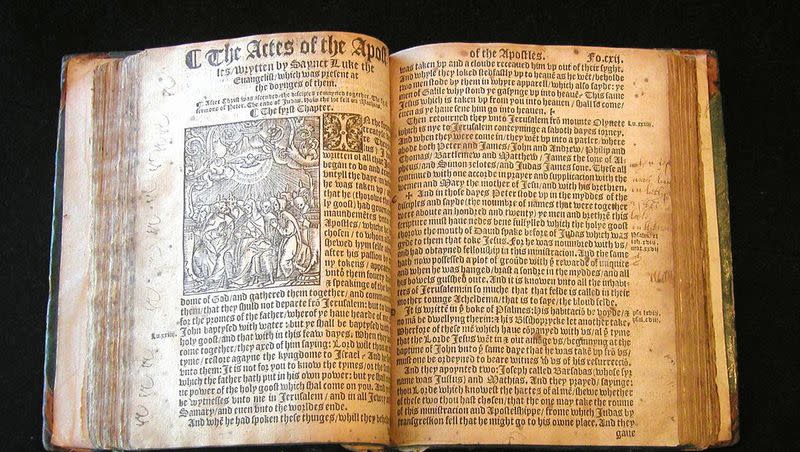AI will be used to translate the Bible. How does Biblical translation work?

Even though the Bible is “the most-translated book in the world,” there are some rare languages into which it hasn’t been translated. Two researchers from the University of Southern California are looking to change that, according to Religion News Service.
The researchers, Joel Mathew and Ulf Hermjakob, don’t plan on poring over the text for hundreds of hours — they are planning on using artificial intelligence instead.
Their tool is called Greek Room. The plan is to use it to translate the Bible into rare languages. Mathew told Religion News Service that he’s seen how difficult manual translation can be and components of it, like spell-checking, are time consuming. “In the context of translation into rare languages, only local church members are qualified and they don’t have the technology to back their work.”
The full Bible is only fully translated into 724 out of the 7,388 total languages in the world, according to Wycliffe Global Alliance. Around 20% of the world’s population doesn’t have access to a full Bible in their first language.
“This first version of the Greek Room focuses on quality control so translators can prioritize other tasks that require more judgment, like finding a way to translate a concept that doesn’t exist in a given language,” Religion News Service reported. This means local churches and communities can be involved in the translation process.
How does Biblical translation work?
The Bible isn’t translated into many different languages. There are around 900 English printed translations, but it’s difficult to determine the total number of English translations in existence, per American Bible Society News.
The Old Testament and the New Testament were originally written in Hebrew, Aramaic and Greek, with several different manuscripts in circulation. Some of the English translations include the King James Version, the New Revised Standard Version, the New International Version and more.
Translation of the Bible is a difficult and disputed process. For one, there isn’t such a thing as an original manuscript. According to Blue Letter Bible, all of the originals were lost for varying reasons, such as the perishable materials they were written on, destruction of manuscripts after copying them and more.
There are, however, several different manuscripts, both extant (meaning a full version) and fragmentary, used in the process of translation. These manuscripts will have small discrepancies and variations. Translators make decisions based on the text, the context and other factors when deciding which version of a manuscript to use.
Translators have other considerations when approaching the text, such as reliability and readability, according to The Bible Project. Like many other literary works, Biblical authors sometimes used poetic language, idioms and other ways of writing that would make sense to people who knew the author’s language and lived in the author’s culture. But those idioms don’t necessarily translate to a modern English speaker.
So, when translating, translators will have to play a balancing act of rendering the ancient text into something modern readers can understand and that captures the original text. Different translators have different ideas about the best way to go about doing so.

